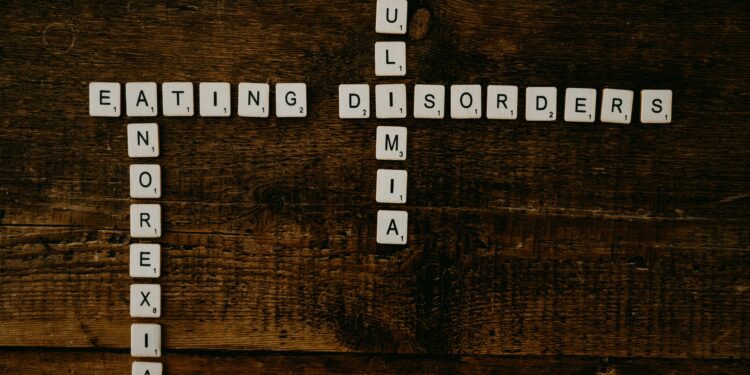Freedom of speech was not designed to help teenagers starve.
Yet on TikTok, it often does. A single swipe can plunge a user into the deeply aestheticized world of “SkinnyTok,” where calorie counts, ribcage challenges, and glamorized eating disorder routines masquerade as lifestyle tips. Under a thin veneer of wellness hashtags and viral audio, a darker reality pulses: the normalization—and monetization—of mental illness.
The platform’s defenders call it free speech. Critics call it digital negligence. Somewhere in between lies the complex and uncomfortable truth: when it comes to pro-eating disorder content online, the First Amendment is colliding with first-degree harm.
How Pro-ED Content Thrives in a Viral World
TikTok’s algorithm, designed to maximize engagement, has proven highly efficient at surfacing niche content—especially that which elicits strong emotional reactions. According to an investigative report by The Wall Street Journal, TikTok’s recommendation engine can lock users into an eating disorder echo chamber in under an hour, especially if those users are young, female, or vulnerable.
While some videos are explicitly “pro-ana” or “thinspo,” most are more insidious. They feature before-and-after weight loss transitions, “What I Eat in a Day” routines with dangerously low caloric intakes, or workout regimens coupled with comments about achieving an ideal body type. These videos often dodge bans by using euphemisms or coded hashtags—#bodycheck, #edtok, or even emojis.
Moderators remove thousands of such videos daily. But content moderation at scale is both imprecise and reactive. The problem isn’t that TikTok doesn’t try to police this content—it’s that the system it has built ensures it will never fully succeed.
When Censorship Becomes Necessary
This brings us to a philosophical and legal fault line: Is censorship justified when it prevents harm? And who decides where that line is drawn?
In the U.S., freedom of speech is robust but not absolute. Speech that incites violence, promotes child pornography, or meets the standard for obscenity is unprotected. But pro-eating disorder content—despite its harm—often falls into a legal gray area. It doesn’t incite violence against others; rather, it promotes self-harm under the guise of aspiration.
Critics argue that social media companies, especially those with young user bases, have an ethical obligation to go beyond legal minimums. As Dr. Jamie Atkins, a digital psychiatry expert, told Health Affairs, “The idea that every form of expression deserves equal algorithmic amplification is a fantasy. Platforms already curate, prioritize, and suppress all the time. The question is whether they do so ethically.”
The Role of “Debunkers” and the Limits of Counter-Speech
Not all is bleak. Some creators are pushing back. They stitch and duet harmful content, debunking diet myths and exposing the dangers of starvation glamor. These digital first responders serve as grassroots moderators, offering peer-based education and support.
But the burden should not fall solely on them.
Counter-speech is important, but it is not sufficient. Studies from the Center for Countering Digital Hate indicate that for every debunking video, dozens of pro-ED videos remain untouched or go viral. TikTok’s moderation AI can’t distinguish irony from endorsement, resistance from recruitment.
The Commercial Incentive to Look Away
There’s a quieter, more insidious problem: engagement equals revenue. The very content that is most harmful—emotionally charged, identity-driven, visually striking—is also the most profitable. This creates a perverse incentive for platforms to do the bare minimum in moderation.
And so, TikTok tightens its community guidelines, funds anti-ED initiatives, and issues press releases—but does not alter its core recommendation engine.
Reimagining Ethical Design
The solution isn’t to abolish free speech. It’s to redesign how speech is surfaced, rewarded, and contextualized.
What if TikTok’s algorithm flagged high-risk users and steered them toward mental health resources? What if videos with ED hashtags triggered a screen that offered supportive content before allowing full view? What if platforms were legally required to audit the health impact of their algorithms as rigorously as they do their security infrastructure?
These are not radical ideas—they are ethical design principles. And they matter, because the current system isn’t neutral. It’s engineered.
Conclusion: Free Speech or Freefall?
The debate over free speech on social media often falls into binaries: censorship vs. freedom, moderation vs. overreach. But the eating disorder crisis on TikTok shows us that the reality is messier.
Unchecked speech can normalize illness. Moderated platforms can still perpetuate harm. And in a world where a teen’s mental health can hinge on a swipe, it’s no longer enough to ask what we allow people to say.
We must ask what we allow algorithms to amplify.
Because when the algorithm is louder than the user—and more persuasive than a parent—free speech doesn’t just inform.
It indoctrinates.















